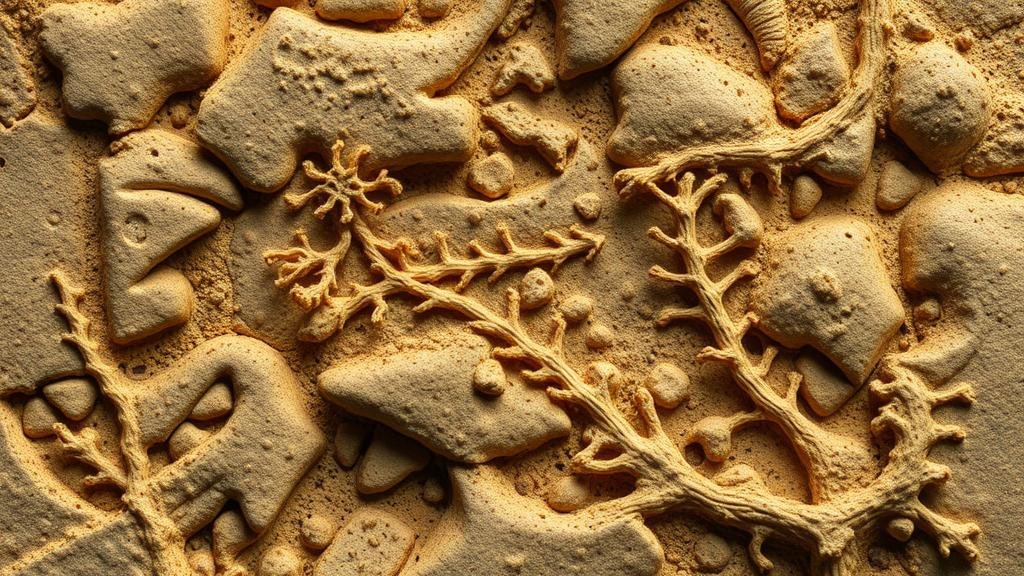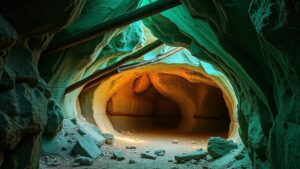Investigating fossilized plants in Greenland, preserved from a time when the island was lush.
Investigating Fossilized Plants in Greenland: A Journey into the Islands Lush Past
Greenland, an island primarily known for its expansive ice sheets and inhospitable climate, bears a hidden secret beneath its surface–evidence of a time when it supported a thriving flora. As rockhounds and mineral collectors delve into the geological history of this Arctic landscape, investigating fossilized plants offers unique insights into prehistoric ecosystems.
A Glimpse into Greenlands Prehistoric Vegetation
Approximately 55 million years ago, during the Paleocene and Eocene epochs, Greenland was part of a subtropical environment characterized by a warm climate. Fossilized plants found in this region reveal that it was once adorned with lush forests, rich in biodiversity. evidence includes the remains of ancient species such as:
- Sequoias, which suggest towering coniferous forests.
- Palms, indicating temperate, softwood environments.
- Ferns, which thrived in the humid conditions of ancient Greenland.
When examined, these fossils provide clues about the plant species that dominated the landscape and reveal the climate conditions of ancient Greenland.
The Importance of Fossil Study for Rockhounds
For rockhounds, the study of fossilized plants in Greenland goes beyond mere curiosity; it can provide critical details about the geological processes that formed the Earth’s surface. By understanding how these plants were preserved, collectors can educate themselves about fossilization processes, stratigraphy, and the geological timeline. Notably, fossilization in sedimentary layers occurs in the following ways:
- Compression: The pressure from sediment layers causes plant material to compress and form fossils.
- Mineralization: Organic material can gradually replace by minerals, preserving intricate details.
These processes yield vital evidence for understanding ancient climates and ecological interactions.
Notable Locations for Fossil Collection
Collectors targeting fossilized plants in Greenland often focus on specific locations rich in fossil-bearing deposits. Some noteworthy sites include:
- Jameson Land: This area has been a focal point for paleobotanical studies, yielding a variety of plant fossils.
- Northwest Greenland: Known for its limestone deposits that frequently contain preserved plant remains.
Explorers should ensure they are prepared for the challenging conditions of these remote areas, as accessibility can vary based on weather and melt seasons.
Scientific and Educational Significance
Fossilized plants from Greenland contribute significantly to our understanding of evolutionary biology and climate change. For example, studies of these fossils have revealed that:
- The Earth’s average temperatures during the Eocene were about 13 degrees Celsius warmer than today.
- Coniferous species adapted to cooler climates likely evolved from these lush predecessors.
Such findings provide context for current climate models, enabling scientists to better understand the implications of ongoing climate change.
Tips for Mineral Collectors and Rockhounds
For those interested in collecting fossilized plants, here are practical tips to enhance your experience:
- Research Before You Go: Familiarize yourself with the geological history of your target area and the types of fossils you may encounter.
- Use Proper Equipment: Bring along tools such as hammers, chisels, and safety gloves for effective and safe collection.
- Respect Local Regulations: Be aware of and comply with local laws regarding fossil collection to preserve the integrity of these sites.
Conclusion
Investigating fossilized plants in Greenland reveals a rich and verdant past that starkly contrasts with its present-day icy landscape. For rockhounds and mineral collectors, these explorations offer not just the thrill of discovery, but also the opportunity to contribute to crucial scientific discourse on climate and evolution. Remember to respect nature and local regulations during your quests, ensuring that these fascinating histories can be studied for generations to come.


